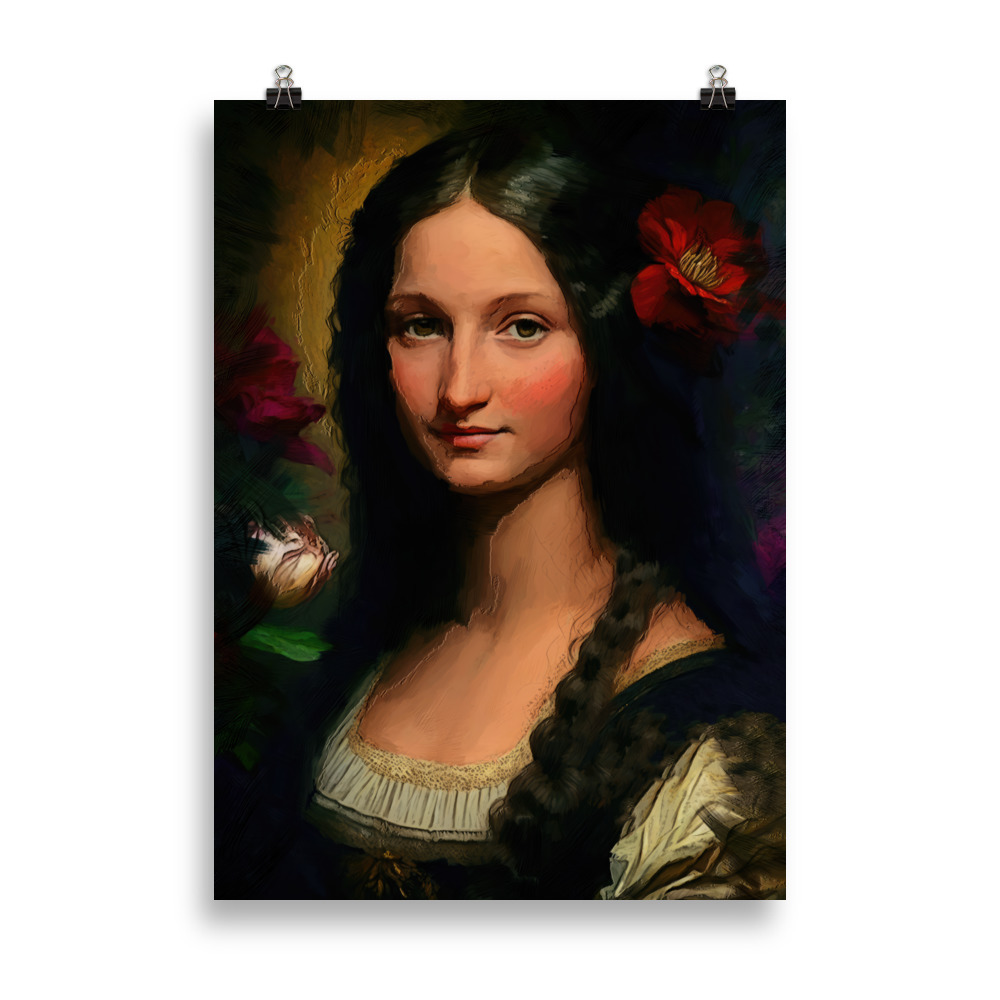
Who is Lisa Gherardini
Lisa Gherardini, known to history as the enigmatic woman behind Leonardo da Vinci’s masterpiece, the Mona Lisa, has intrigued art enthusiasts and historians for centuries. While her name might not be immediately recognizable, her image is one of the most iconic in the world. This blog post delves into the life of Lisa Gherardini, exploring her origins, her connection to the famed painting, and her enduring legacy.
Early Life and Family Background
Lisa Gherardini was born on June 15, 1479, in Florence, Italy, during the height of the Renaissance. Her full name was Lisa di Antonmaria Gherardini, and she belonged to a noble but not particularly wealthy family. The Gherardinis were part of the Florentine merchant class, which had gained prominence in the thriving economic and cultural environment of the time. Lisa’s father, Antonmaria di Noldo Gherardini, was a successful wool merchant who ensured his family maintained a respectable position in society despite financial challenges.
Lisa grew up in Florence, a city renowned for its artistic and intellectual vibrancy. Her formative years were spent amidst the cultural blossoming of the Renaissance, an era that celebrated human achievement and creativity. Her family owned property in the city and in the countryside, providing Lisa with a stable upbringing in a time when social and economic stability were not guaranteed.
Marriage and Domestic Life
At the age of 15, Lisa married Francesco del Giocondo, a wealthy silk merchant and widower. Their marriage, arranged as was customary at the time, was a union of mutual benefit. Francesco’s wealth provided Lisa with a comfortable life, while her noble lineage elevated his social standing. The couple lived in a well-appointed home in Florence, where Lisa assumed the traditional roles of wife and mother.
Lisa and Francesco had five children: Piero, Andrea, Camilla, Marietta, and another son who died in infancy. Lisa’s life revolved around her family, and she managed the household with care. Despite the limitations placed on women during the Renaissance, Lisa’s position allowed her to enjoy a relatively privileged existence. She was known for her grace and composure, qualities that likely contributed to her selection as the subject of Leonardo da Vinci’s portrait.
The Mona Lisa: A Portrait of Mystery
Lisa Gherardini’s most enduring legacy is her association with the Mona Lisa, one of the most famous paintings in history. Commissioned by Francesco del Giocondo, the portrait was intended to celebrate the birth of the couple’s second son, Andrea, and their acquisition of a new home. Leonardo da Vinci began working on the painting around 1503, but it remained unfinished for years.
The Mona Lisa is celebrated for its groundbreaking techniques and enigmatic qualities. Leonardo employed sfumato, a technique that creates a soft, smoky transition between colors and tones, giving the painting its lifelike quality. Lisa’s subtle smile and direct gaze have captivated viewers for centuries, inspiring countless interpretations and debates about her mood, identity, and the artist’s intentions.
While the painting was commissioned as a private portrait, Leonardo never delivered it to Francesco. Instead, he kept it with him until his death in 1519. Scholars believe that Leonardo continued to refine the painting over the years, considering it a masterpiece that represented the pinnacle of his artistic achievements. Today, the Mona Lisa resides in the Louvre Museum in Paris, where millions of visitors flock each year to marvel at its beauty and mystery.
The Historical Context of Lisa’s Life
Lisa Gherardini lived during a transformative period in European history. The Renaissance was marked by groundbreaking advancements in art, science, and philosophy. Florence, in particular, was a hub of innovation, home to luminaries such as Michelangelo, Botticelli, and, of course, Leonardo da Vinci. It was also a time of political upheaval, with the Medici family’s rise to power and the turbulent conflicts between city states.
Despite these dramatic shifts, Lisa’s life was largely centered on her domestic sphere. Her story offers a glimpse into the everyday experiences of women during the Renaissance, who were often overshadowed by the era’s celebrated male figures. Lisa’s role as a wife, mother, and muse reflects the societal expectations placed on women, as well as their contributions to the cultural fabric of the time.
Later Years and Death
Lisa Gherardini’s later years are less well-documented, but it is believed that she lived a long life by the standards of her era. After Francesco’s death in 1539, Lisa entered the convent of Sant’Orsola in Florence, where her daughter Marietta was a nun. This was a common choice for widowed women of her social class, offering both refuge and spiritual fulfillment. Lisa is thought to have died in 1542 at the age of 63, though the exact details of her death remain uncertain.
Rediscovering Lisa Gherardini
For centuries, the identity of the Mona Lisa’s subject was shrouded in mystery. It wasn’t until the early 16th century that Giorgio Vasari, a contemporary biographer of Leonardo, identified her as Lisa Gherardini. Subsequent research and discoveries have corroborated this identification, shedding light on her life and times.
In recent years, interest in Lisa Gherardini has grown, fueled by archaeological excavations and historical studies. In 2007, researchers discovered a burial site believed to contain Lisa’s remains beneath the convent of Sant’Orsola. While efforts to confirm her identity through DNA analysis and other methods are ongoing, these findings have reignited fascination with the woman behind the world’s most famous smile.
The Legacy of Lisa Gherardini
Lisa Gherardini’s legacy is inextricably linked to the Mona Lisa, a painting that has transcended its time to become a symbol of artistic excellence and human intrigue. Through Leonardo’s genius, Lisa’s image has achieved a form of immortality, representing not only her individual story but also the universal themes of beauty, mystery, and the passage of time.
Beyond the painting, Lisa’s life offers valuable insights into the Renaissance era, particularly the roles and experiences of women. Her story reminds us that behind every great work of art is a human being with a unique life and history. As scholars and enthusiasts continue to explore her world, Lisa Gherardini remains a captivating figure who bridges the gap between the past and the present.
In the end, Lisa Gherardini’s biography is more than just the tale of a merchant’s wife; it is a testament to the enduring power of art to preserve and celebrate the human spirit.




